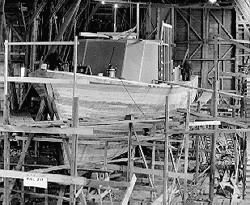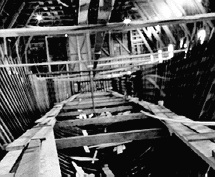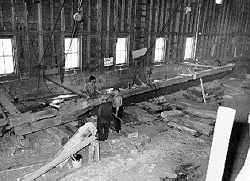
 Everday
life in the region
Everday
life in the region
Although relatively isolated, national and international events did not go unnoticed in the Saint Mary's Bay area of Nova Scotia. Both the local population and the students at Sainte-Anne's felt the repercussions of these world developments.
International events

World War I, the economic crisis of 1929, World War II… no need to
elaborate on these unforgettable events. Yet, an interesting but little
studied aspect is the effect that these events had on the Acadians of Southwestern
Nova Scotia and on the population living within the confines of Collège
Sainte-Anne.
The First World War (1914-1918) : a big shock for the world
population in general. Like others, the people in the area of Saint Mary's Bay needed
to modify their everyday life in order to adjust to the changes brought
on by the war.

During these years, enrolment was low at the College and the price
of lodging went up. The situation was compounded by the many students who
did not pay their fees because they simply did not have the money. The
war caused a vicious cycle that brought about the increase in prices, the loss
of employment, a stagnant economy, etc.
Then came the crash of 1929. Few people attented university at that time because
money was very rare. In addition to this, some of the Fathers from France
had to do compulsory military service. Those who stayed behind were given
more tasks in an already overloaded schedule. In short, the vicious cycle
continued.

The authors Laliberté and LeBlanc mention in their book that the
First World War did bring some positive results to the area. The
creation of a shipyard in Meteghan did afford a few
employment opportunities and this had some effect on enrolment
at the Collège.
May 7, 1945, was a time of great rejoicing throughout the world.
The College embrassed the end of the war with a campfire, a dance,
and a parade. Following the war, dignitaries such as the Comte de Caix
and Louis Saint-Laurent visited the institution.
